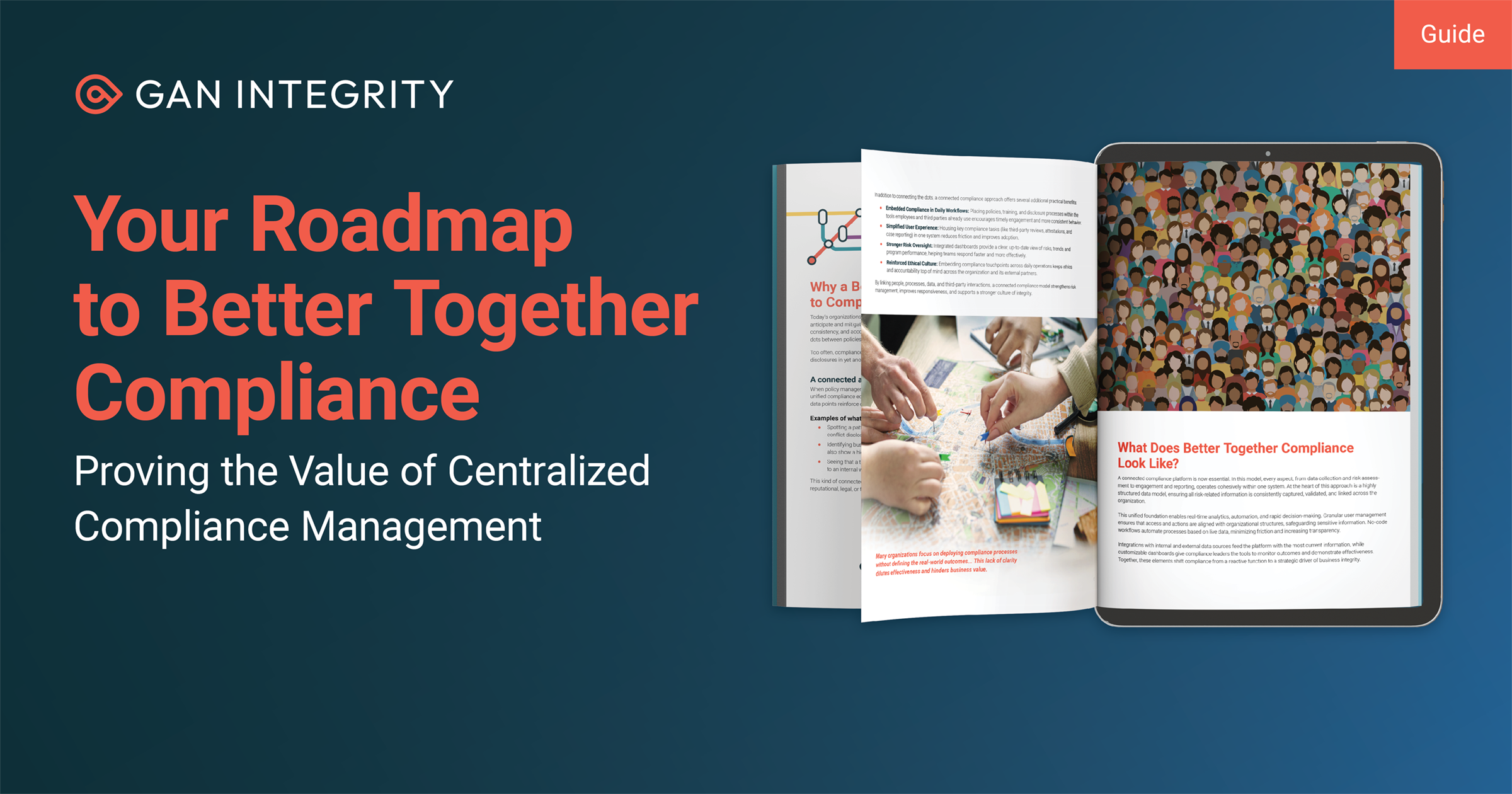Compliance officers and corporate leaders talk constantly about the need for an “engaged” workforce: one that doesn’t just follow the rules from management because that’s what they are paid to do, but rather, a workforce that truly wants to work with management to help the company succeed.
In today’s increasingly uncertain, challenging, and highly regulated world, that engaged workforce will be crucial to success. Such employees will help management to anticipate problems, find solutions, and help the whole organization prosper.
That’s a lovely goal, but how can companies achieve that in practice? And what role will corporate ethics and compliance functions play in achieving it?
We have talked about the idea of empowered ethics previously — about how a focus on ethics cuts through the “compliance clutter” to help employees understand and do the right thing. When the values and ethical priorities of employee and organization are in alignment, that is what drives employee engagement. In other words, empowered ethics is crucial to the engaged workforce senior management wants to create.
Still, empowered ethics is easier said than done. Compliance officers need a keen understanding of how to make it work, the business benefits it can deliver, and how to lead executives beyond their comfort zone to make that shift in mindset. This paper explores how to get that done.
Solution
Incident Management
Deploy a whistleblowing and incident management solution that makes speaking up easy and case resolution streamlined.
View our incident management solutions
How Does a Company Shift Ethics and Compliance Mindsets?
Empowered ethics begins and ends with trust. To drive that shift in employee mindset, the compliance team — working with senior management and other parts of the enterprise — must work to foster trust. Employees must trust that management’s policies, procedures, and controls serve a valid purpose; and management must trust that employees naturally want to act in accordance with the company’s ethical and business priorities. (Even if those employees need coaching and leadership to understand what that means in practice.)
It’s incumbent on management to create that culture of trust. Left to themselves, even well-meaning employees might misunderstand what matters most to the company, or different groups might develop their own sub-cultures that depart radically from the performance you want to achieve.
For example, a culture of trust develops when…
- Employees feel heard when they speak up about something important to them.
- Employees believe that the company has the same ethical priorities as they do.
- Employees have proper incentives, right down to thoughtfully designed compensation packages.
- Employees “feel trusted” — meaning, they have certain freedoms to do their jobs as they see fit, without burdensome supervision.
One can see how compliance officers could take each of the above bullet points and put them into practice at an actual corporation.
Feeling heard. This could take the shape of an internal reporting hotline that strives to exist as a two-way street. When an employee submits a report on the hotline, he or she should receive regular updates about the status of the case, even if that update is only to say the company isn’t at liberty to say much. (Indeed, it’s little surprise that the EU Whistleblower Directive requires whistleblower programs to include regular updates back to the reporter.) Compliance teams should also embrace case management tools that help to resolve issues promptly, so that employees aren’t left to wonder whether their report will ever reach a conclusion.
Employees also feel heard when their immediate managers listen to their concerns and communicate well. So the compliance and HR teams might team up to devise training for managers (especially first-time managers) so that they can succeed in that important role.
Believing in ethical priorities. Here, senior leaders should take the lead on defining what the company’s ethical values are. That means stating those values in a Code of Conduct, certainly; but it also means senior managers talking about the importance of ethics in specific, concrete ways. For example, executives could talk about a piece of business turned down due to ethical concerns. Compliance teams could offer more examples in in-house newsletters (specific details anonymized, of course).
Proper incentives. Compensation plans that pit one employee against another, annual review plans that automatically eliminate the bottom 10 percent of employees, and similar cutthroat approaches to personnel management — they do nothing to foster a sense of trust. Compliance, HR, and line-of-business leaders should work to devise compensation plans that encourage cooperation (such as team-based incentive pay) rather than winner-take-all competition.
Feeling trusted. Management teams always run the risk of implementing too many controls, rigidly governing how employees go about their daily routines. That can leave employees disengaged from the company’s performance and success, since they have so little opportunity to exercise their own judgment.
The challenge is to strike the right balance between a strong control environment, which stresses the importance of ethical conduct but leaves employees to act accordingly; and strong control activities to monitor transactions and intercept suspicious conduct. To do so, the compliance officer must work with business unit leaders, other risk managers, and internal audit to find the right blend of controls for your specific business and culture.
Solution
The Integrity Platform
Drive tangible impact with the Integrity Platform, making your people active participants in a journey toward ethical business transformation by engaging them with ethical experiences at all touchpoints.
Learn more
Trust Leads to Empowered Ethics
Once employees see and feel that culture of trust — that the company wants them to succeed, and to follow ethical priorities that resonate with their own — then employees will reciprocate that trust. They will want the company to succeed in the same way that the company wants them to succeed.
Such a culture does not emerge overnight. Senior management and compliance officers need to assure that the company’s ethical priorities, corporate policies, and compliance tools all work together; so that employees can put ethics at the center of what they do. That can involve painstaking work analyzing employee sentiment, developing policies and incentives that work (especially challenging for global organizations working across geographic cultures), and a certain amount of trial-and-error.
That raises a perfectly fair question: What is the return on investment in a culture of empowered ethics and engagement?
The Benefits of Ethics and Engagement
The benefits are many, but if employees are the most important part of a corporation, we can start there: a more ethically engaged workforce is a better workforce.
For example, one study after another has shown that corporations with a strong ethical culture (defined by, say, higher rates of internal reporting) tend to have lower employee turnover and higher productivity. That can lead to lower costs in recruitment and training, as well as higher revenue from more productive employees. More broadly, when employees “feel heard,” they’re more likely to bring concerns to management’s attention — which is just another way of saying employees have a stronger desire to help the company solve its problems. A company that is more responsive to its problems is better positioned to thrive in the competitive marketplace.
A company that can resolve ethics and compliance issues more promptly also makes a better impression upon regulators, business partners, and other stakeholders. For example, a business that enforces ethics across its enterprise and down through its supply chain, and can document that effort, is a more attractive third party to its own customer base. A company that reduces its ethical missteps, and addresses them more promptly when those missteps do happen, will have lower reputation risk with its customers and consumers at large — always important in today’s social media-saturated world.
The goal with empowered ethics and an engaged workforce isn’t specifically to save money for the organization, although that can happen as you experience fewer serious regulatory infractions. Rather, the goal is to assure that acting ethically delivers a real return on investment — and one larger than acting unethically, or only acting in a check-the-box compliance approach. Empowered ethics drives better workforce engagement, and an engaged workforce delivers that ROI you need.
Challenges You’re Likely to Encounter When Making Changes
This shift in culture is, of course, easier said than done. Compliance officers will encounter numerous obstacles both practical and conceptual. Let’s consider a few of them.
Senior managers won’t strike the right tone. The CEO might claim that he or she wants a culture of ethics and trust, but then not follow up by directing subordinates to implement the necessary policies, practices, and even personnel to put that ethical focus into practice. To overcome this obstacle, try consulting with other mid- and senior-level executives first, to build a consensus on the most important, strategically advantageous changes that could be implemented first (say, incentive compensation plans). Then present those ideas to the CEO, so that the culture shift isn’t simply another message from on high that has no real support; it already has that support from the critical middle layers of the organization.
Your compliance processes are too complicated. Even when senior management does strike the right tone, if your compliance processes make acting on ethical concerns too difficult — too many forms to submit, too many questionnaires to answer, too much confusion on how to raise a concern — employees won’t participate. Complicated, “over-controlled” processes contradict the culture of trust and engagement you want to achieve.
For this obstacle, focus on how to embed compliance goals into your existing business processes; or on automating compliance processes to alleviate that burden from employees. Automated due diligence and case management systems, interactive Codes of Conduct, easy internal reporting hotlines, training that’s relevant and accessible for each population group; there are a host of ways to simplify and integrate your compliance operations, so that when employees do want to act on their ethical concerns, the compliance program isn’t a burden to that.
Difficulty in measuring and monitoring progress. Measuring compliance program success and improvement over time will be crucial in years to come, considering the U.S. Justice Department’s new focus on compliance program effectiveness — including a strong desire to see data that proves the program’s effectiveness over time. This means compliance officers will need complete, accurate, reliable data; and that data must connect to useful key performance and key risk indicators (KPIs and KRIs).
Compliance officers will need to approach this challenge from several directions. For example, the CCO might want to assess the compliance program’s own progress in, say, responding to hotline calls or closing investigations promptly (two important KPIs for any compliance program). To do that, the compliance officer will need to work with IT teams (either your own, or those of your software vendors) to assure that the compliance program’s IT systems can extract the correct data to feed into those KPIs.
Other KPIs will need other “feeds” of data, including feeds that come from third parties in your supply chain or from paid data vendors. To measure, monitor, and report progress, compliance officers will need to assure that all data is classified properly and stored in a single data repository. In short, measuring and monitoring progress is a constant exercise in data management; have the tools, processes, and people to do it well.
Conclusion
Organizations need to put ethical behavior at the center of how employees view their jobs and daily routines; by empowering employees to act on their ethical concerns, you foster that strong corporate culture vital to succeed in today’s complex business and regulatory environment.
Such a shift takes time, and isn’t necessarily easy. Compliance officers will need to build a business case for why the company should make that shift. To do that, they’ll need to show how their compliance program can help employees be better, more productive performers — and how that, in turn, can help the company’s bottom line and its relationship with regulators, customers, investors, and other stakeholders.
The alternative is to stay the course, ladling one more compliance procedure after another onto the workforce, and struggling to keep up with floods of data and ceaseless reports. But that’s barely sustainable right now, and it certainly won’t be sustainable in the future — which is, after all, what CEOs and the boards are supposed to worry about.
